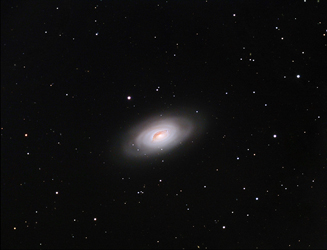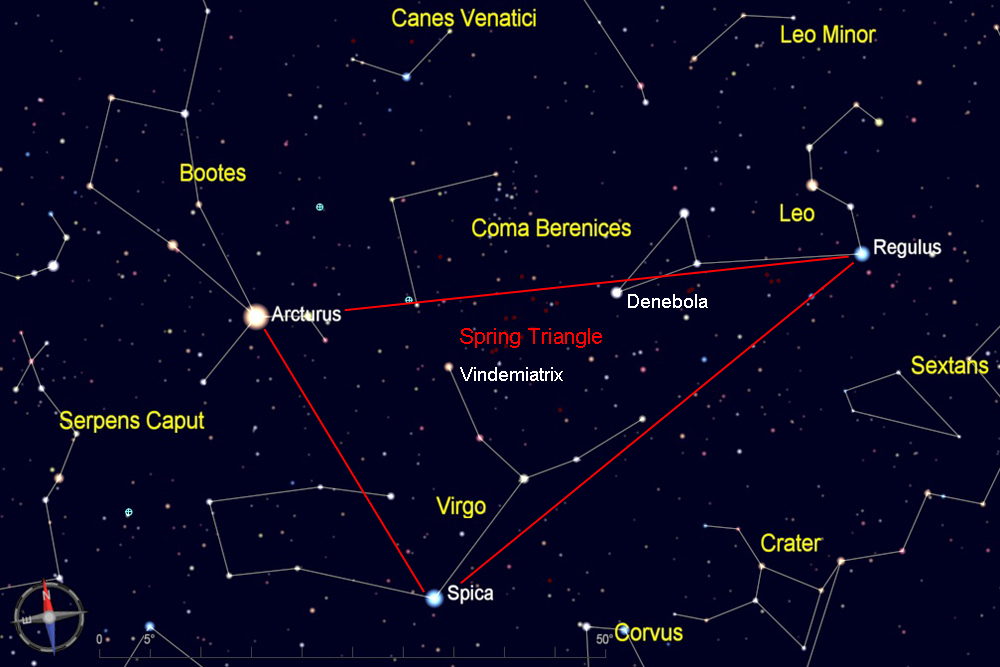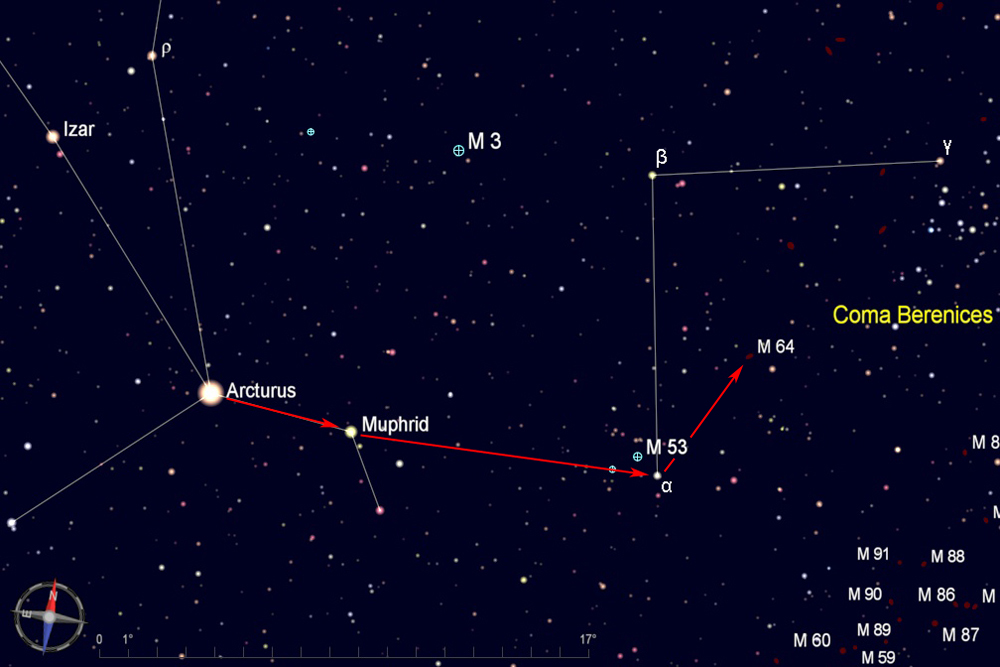Messier 64 gets its name from the large dark semi-circular dust band that surrounds the galaxy's nucleus. The bright central region and the dark band are quite easy to see with most telescopes. The galaxy is relatively close to us, at about 14 million light years, but it is not especially large. With an estimated size of about 48,000 light years, it is only half the diameter of our own Milky Way galaxy.
|
. |
| Evening visibility: |
March-July |
| Best viewed with: |
telescope |
| |
Printable chart (pdf) |
View larger image |
Directions:
Start by finding the Spring Triangle, which consists of three widely-separated first magnitude stars--Arcturus, Spica, and Regulus. The Spring Triangle is high in the southeast sky in early spring, and in the southwest sky by mid-Summer. (To get oriented, you can use the handle of the Big Dipper and "follow the arc to Arcturus").
For this star hop, begin from brilliant Arcturus (magnitude 0). |
. |
| From Arcturus, look 5 degrees to the west to find 2nd magnitude Muphrid, then continue along this line twice that distance, and look for α (alpha) Coma Berenices. Although it is the brightest star in the constellation, α Coma Berenices is only magnitude 4.3, and it may be difficult to see with the naked eye under light polluted skies. Once you have located α, move 5 degrees to the northeast to reach the location of M64. A 5th magnitude star less than a degree to its southwest can help to locate it. |
. |
| Star charts created with Cartes du Ciel |
| |
| |


